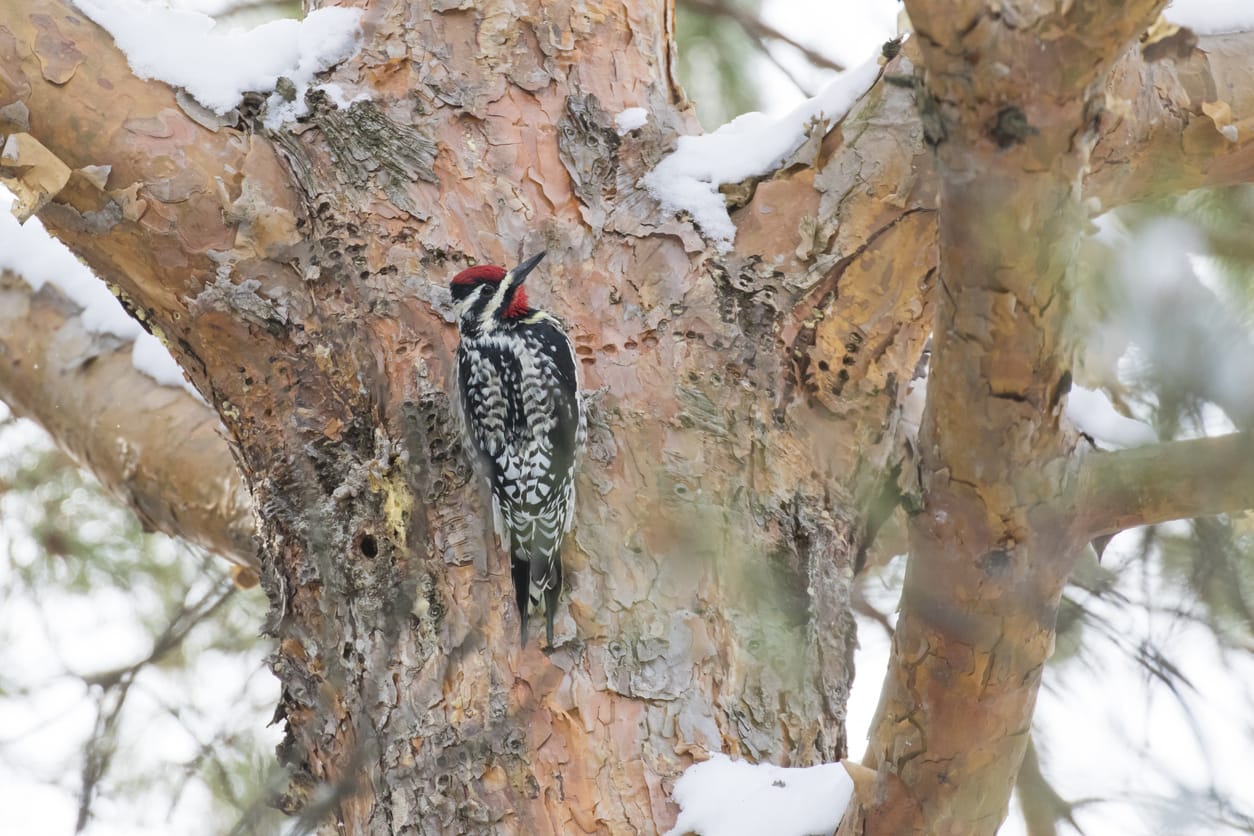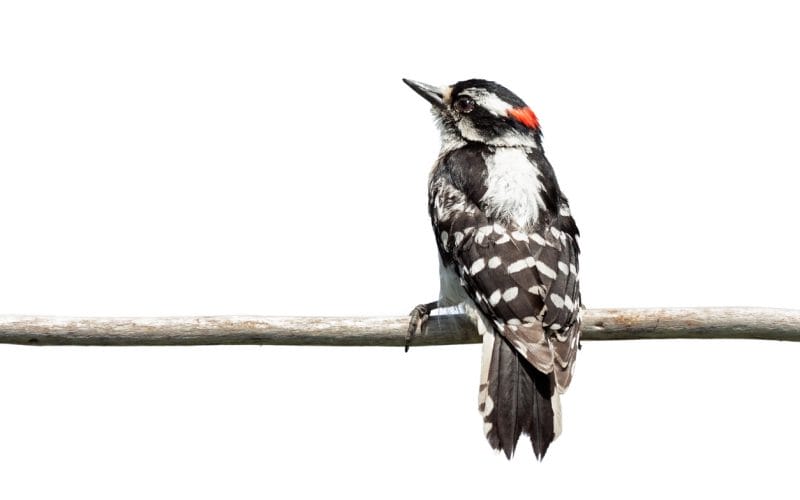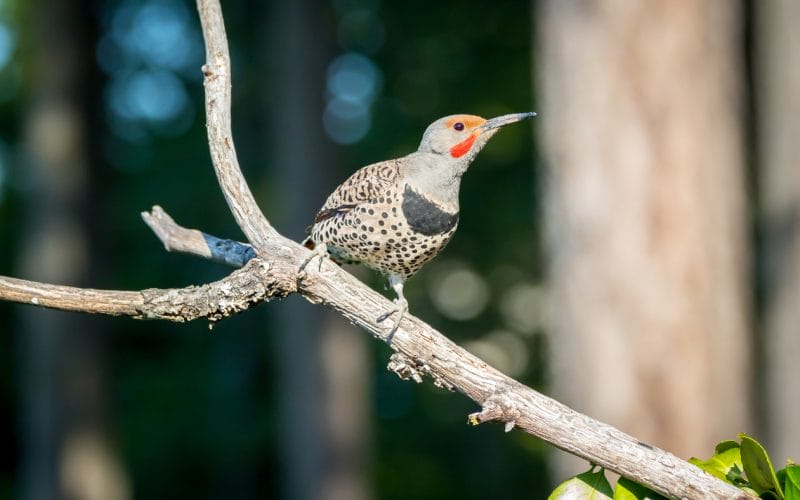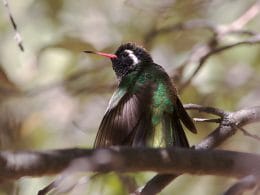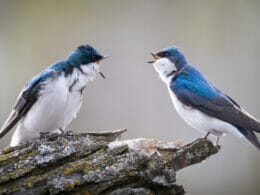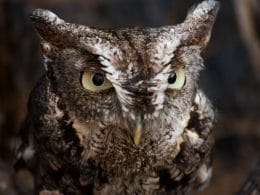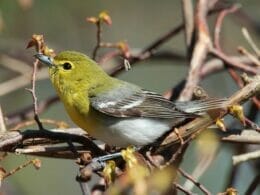Ohio, the Buckeye State, is covered in nearly eight million acres of diverse forest land areas, which is about 30% of the state’s total area. It stands to reason, then, that the Buckeye State has a diverse range of habitats that appeal to many bird species, particularly woodpeckers.
Of the 23 woodpecker species native to North America, seven are almost certain to be found in Ohio, including the largest and smallest woodpecker species.
Several of these woodpecker species are year-round residents, and they’re more common around suburban areas in the winter due to food scarcity, making Ohio an ideal winter destination for bird watchers.
In this article, we’ll have an in-depth breakdown of the unique characteristics and features of the woodpeckers in Ohio. Think of this as a guide to help you identify the seven woodpecker species and where to spot them, so be sure to stick around!
7 Common Species of Woodpeckers in Ohio
The Buckeye State is home to seven woodpecker species, four of which are permanent residents. We’ve arranged this list in the order of most commonly seen to least frequently seen.
1. Downy Woodpecker

- Scientific name: Dryobates pubescens
- Length: 5.5 to 6.7 inches
- Weight: 0.7 to 1 ounce
- Wingspan: 9.8 to 11.8 inches
- Lifespan: 2 to 4 years (wild); 11 years (oldest recorded)
The Downy Woodpecker is Ohio’s, as well as North America’s, smallest and most populous woodpecker. It can be seen all year long throughout Ohio.
Due to their small size, Downy Woodpeckers nest in holes dug in dead tree cavities. They inhabit deciduous trees in open woodlands, orchards, brushy woodland edges, parks, fields, and suburban backyards. They can also be seen among tall weeds.
Top Tip: These tiny woodpeckers have black and white plumage, with a mostly black back and a large white swath in the center.
The wings are a checkered black and white, while the underside is entirely white that’s paler than the dusky-white underside of the Downy Woodpeckers in the West.
Their heads are boldly striped with black and white. However, juvenile Downy Woodpeckers have red feathering on their caps, and adult males have a small red patch on the back of their heads.
In Ohio, Downy Woodpeckers are frequent visitors to bird feeders. You may even see the small black and white bird drinking nectar from hummingbird feeders.
Still, you can attract more of these tiny woodpeckers to your backyard by setting up a suet and hopper feeder filled with black oil sunflower seeds, millet, peanuts, and chunky peanut butter.
2. Red-Bellied Woodpecker

- Scientific name: Melanerpes carolinus
- Length: 9.4 inches
- Weight: 2 to 3.2 ounces
- Wingspan: 13 to 16.5 inches
- Lifespan: 12 years (wild); 12 years (oldest recorded)
Red-bellied Woodpeckers are easily the second most common woodpecker species in Ohio, as they live and breed in the state. In fact, they do so well in the presence of human civilization that their global population has been steadily increasing across a wide and diverse range.
These medium-sized woodpeckers are commonly found in deciduous trees or suburban areas with large oak and hickory trees, as well as young hardwoods and pine trees.
While the name refers to its (almost unnoticeable) reddish belly, the Red-bellied Woodpecker’s most distinguishing feature is its bright red cap—not to be confused with the Red-headed Woodpecker, which has entirely deep, crimson red heads.
The male Red-bellied Woodpeckers’ red cap extends from their beaks to their napes. Females, on the other hand, only have that red patch on the back of their necks.
You can easily identify a Red-bellied Woodpecker by its overall tan plumage contrasted with a black and white cross-hatched back.
Red-bellied Woodpeckers, like Downy Woodpeckers, are regular visitors to backyard feeds. They especially like suet and hopper feeders containing black oil sunflower seeds and peanuts.
Their diet mainly consists of insects, spiders, and other invertebrates, but they also feed on the berries of hawthorn and mountain ash trees.
3. Hairy Woodpecker

- Scientific name: Dryobates villosus
- Length: 7.1 to 10.2 inches
- Weight: 1.4 to 3.4 ounces
- Wingspan: 13 to 16.1 inches
- Lifespan: 4 to 11 years (wild); 15 years (oldest recorded)
A year-round resident of Ohio is the Hairy Woodpecker. It’s often mistaken with the Downy Woodpecker, and with good reason!
It’s strikingly similar in appearance to the Downy Woodpecker that it’s often difficult to tell them apart at first glance.
Hairy Woodpeckers have striped heads and a black back with a white patch in the middle. Their wings are black and white checkered, with an all-white underside. Sounds confusing, right?
Here’s how to tell them apart: the Hairy Woodpecker is nearly half a size larger than Downy Woodpeckers. You can also tell the difference between the two woodpeckers through their bills.
The Hairy Woodpecker’s bill is nearly as long as its head and chisel-like, whereas the Downy Woodpecker’s bill is short, dainty, and about one-third the size of its head.
What’s more, Hairy Woodpeckers have a plain white outer tail feather as opposed to the spotted tail of the Downy Woodpecker.
Hairy Woodpeckers are also much more active than Downy Woodpeckers, pecking deep into trees to find food.
Seeds and berries make up a small part of the Hairy Woodpecker’s diet. That’s why they’re harder to spot near backyard feeders.
However, because they primarily consume insects and arthropods, they’re more common in farmlands, woodlots, tree trunks, cemeteries, and parks. They’re also common in burned forests and decaying stands, which attract bark beetles, a favorite of Hairy Woodpeckers.
These energetic woodpeckers are also natural predators of notorious agricultural pests like corn borers, bark beetles, and crop-invasive moths.
4. Pileated Woodpecker

- Scientific name: Dryocopus pileatus
- Length: 15.8 to 19.3 inches
- Weight: 8.8 to 12.3 ounces
- Wingspan: 26 to 29.5 inches
- Lifespan: 12 to 13 years (wild); 13 years (oldest recorded)
The Pileated Woodpecker is mostly black in color, with white stripes running from the side of its head to the underside of its wings. Those white undersides are only visible when the woodpecker is in flight.
What sets the Pileated Woodpecker from other woodpeckers is its huge size, which is comparable to that of a crow. In fact, it’s the largest woodpecker not only in Ohio, but also in North America.
It actually didn’t hold the title of North America’s largest woodpecker until recently, when the Ivory-billed Woodpecker was declared extinct.
Aside from its distinctly massive size, one of the first features that people notice about a Pileated Woodpecker is its bright red crest. The males have an extra red cheek stripe.
Pileated Woodpeckers are year-round residents of Ohio, but they’re much more common in the eastern and southern forests. They live in mature or drowned forests with many dead trees. They also prefer hardwoods, deciduous woodlands, and large-tree parks.
Author Note: Pileated Woodpeckers are persistent, borderline aggressive feeders that can dig for beetle larvae, carpenter ants, termites, and other insects from dead trees for long periods.
They leave behind rectangular holes in trees, so keep an eye out for those. These unique holes can be so wide and deep that they can split small trees in half.
These large woodpeckers also eat fruit, seeds, nuts, and berries, so you may find them around backyards and wooded suburbs. They’re also at ease in human environments, so set up a nest box to attract a breeding pair.
5. Northern Flicker
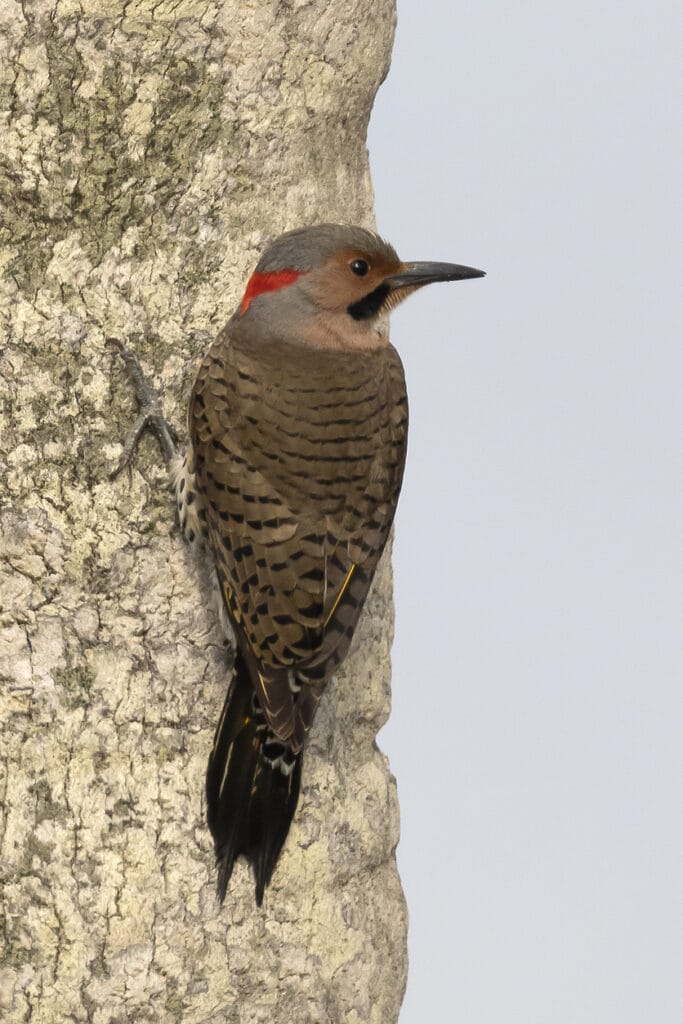
- Scientific name: Colaptes auratus
- Length: 11 to 12.2 inches
- Weight: 3.9 to 5.6 ounces
- Wingspan: 16.5 to 20.1 inches
- Lifespan: 5 to 6 years (wild); 9 years (oldest yellow-shafted Flicker recorded); 8 years (oldest red-shafted Flicker recorded)
Just like their unique name, Northern Flickers are quite different from other woodpeckers.
Northern Flickers, also known as Common Flickers, are the first woodpecker species on our list that doesn’t live in Ohio year-round. Because they’re a strongly migratory species, Northern Flickers are around during the summer but migrate south when it gets colder.
It’s also the only woodpecker on our list that doesn’t peck at trees for food. Similar to anteaters, Northern Flickers forage on the ground for ants, beetles, and other insects. They also feed on fruit, seeds, and berries of poison ivy and poison oak.
That’s not to say they don’t drill into tree trunks like other woodpeckers. They frequently drum on trees to excavate nests or communicate with other Flickers.
These fairly large-sized birds mostly inhabit open woodlands and forest edges. They can also be seen in open fields, swamps, wetlands, parks, and some suburban areas.
While the Northern Flicker’s plumage varies across subspecies, you can easily identify these woodpeckers by their colorful plumage. In Ohio, the Northern Flicker has yellow shafts on its tail, a black crest on its chest, a red patch on its nape, and a pale underside with black spots.
You can try to attract them to your backyard by setting up a mixed seed bird feeder, but just know that they aren’t frequent visitors at bird feeders.
6. Red-Headed Woodpecker
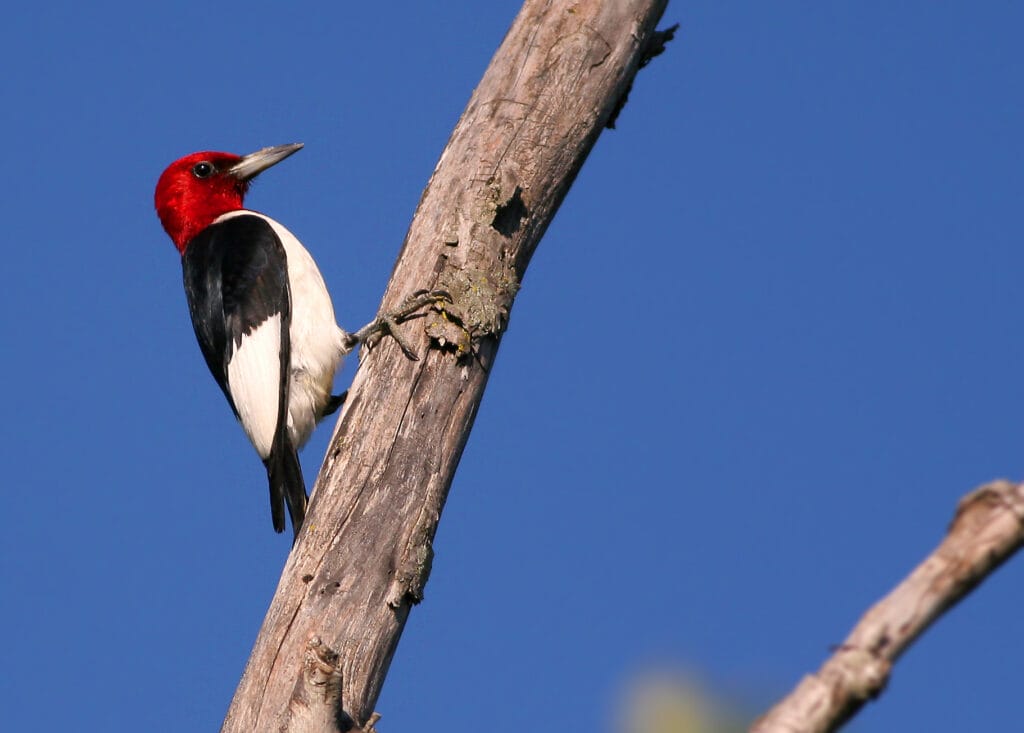
- Scientific name: Melanerpes erythrocephalus
- Length: 7.5 to 9.1 inches
- Weight: 2 to 3.2 ounces
- Wingspan: 16.5 inches
- Lifespan: 9.9 years (wild); 9 years (oldest recorded)
True to its name, the Red-headed Woodpecker is a gorgeous species that starts out with a dark brown head as juveniles that turns into deep, crimson red from the neck up in adulthood. The crimson red contrasts a jet-black back and a snow-white underside.
It’s the only woodpecker in Ohio that’s not sexually dimorphic. This means that males and females have no external differences.
These redheads are more prevalent in western Ohio, but they can be seen throughout the state in the summer. They prefer to breed in deciduous woodlands, orchards, forest edges, farmland, and wooded grasslands.
Top Tip: In the winter, they’ll stay in a variety of habitats, such as mixed forests, open woodlots, swamps with dead timber, and pine savannas.
While their main diet consists of plant materials, if you have a suet feeder, these Red-headed birds will visit your backyard.
Red-headed Woodpeckers also feed on a diverse diet of insects, including midges, beetles, and grasshoppers. One interesting fact about these redheads is that they tend to wait and search for insects to catch them in flight.
7. Yellow-Bellied Sapsucker
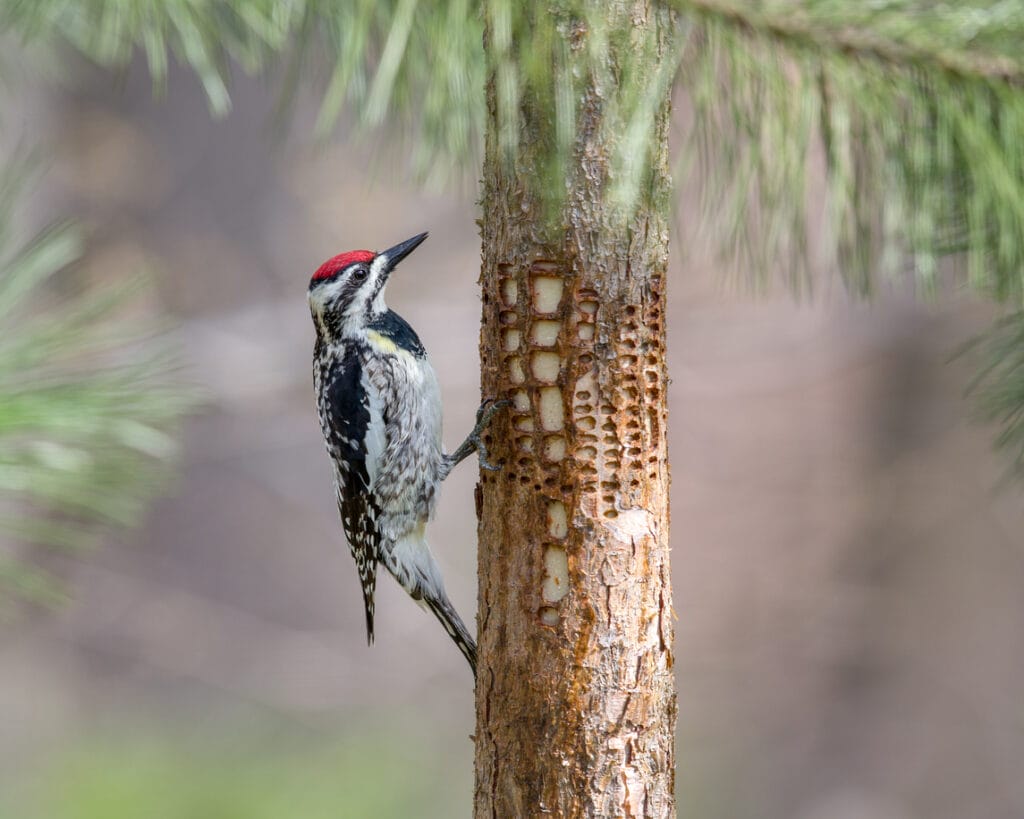
- Scientific name: Sphyrapicus varius
- Length: 7.1 to 8.7 inches
- Weight: 1.5 to 1.9 ounces
- Wingspan: 13.4 to 15.8 inches
- Lifespan: 4 to 6 years(wild); 7 years (oldest recorded)
Last but not least, unlike Red-bellied Woodpeckers, Yellow-bellied Sapsuckers have yellow bellies. They have a black back with white spots and a faint yellow tinge. Males have red caps and throats, whereas females have only a red forehead.
It’s difficult to spot a Yellow-bellied Woodpecker in Ohio because the state is more of a migratory stop for the woodpecker than a permanent residence. Yellow-bellied Sapsuckers can be seen in the north half of the state during spring and fall migration, then migrate south for the winter.
You may spot them in forest clearings or suburban areas, but since Ohio is only a stopover, you’d have to plan your timing and location to be able to catch them.
The second half of the Yellow-bellied Sapsucker name comes from the woodpeckers’ fondness for drilling holes in trees to drink the sap.
They drill arranged horizontal rows of small holes across tree barks so that the sap drains out of the tree. The sap also attracts insects, which the woodpeckers feed on as well.
In Conclusion
Ohio boasts a widely diverse range of woodlands and forests that provide ideal habitat for many wonderful bird species. Among these are seven fascinating birds known for their wood drumming.
Each of the seven species of woodpeckers in Ohio has its unique characteristics. The best part is that most of these species can be seen throughout the state all year.
Should you find yourself in Ohio, it’s worth exploring woodpecker hotspots, like the Cuyahoga Valley National Park, to see how many new woodpecking friends you can spot. Happy birdwatching!
FAQ
The Downy Woodpecker is most frequently seen across the state of Ohio. It is a non-migratory resident.
Killdeer Plains Wildlife Area, Headlands Beach State Park, Oak Openings Preserve Metropark, Buck Creek State Park and Lake Erie Birding Trail are places to start to look for the Red-headed Woodpecker and possibly even the Pileated Woodpecker.
To find out where recent sightings of woodpecker have been, try eBird. You can search for the latest sightings or particular species or what has been seen in a certain area.




